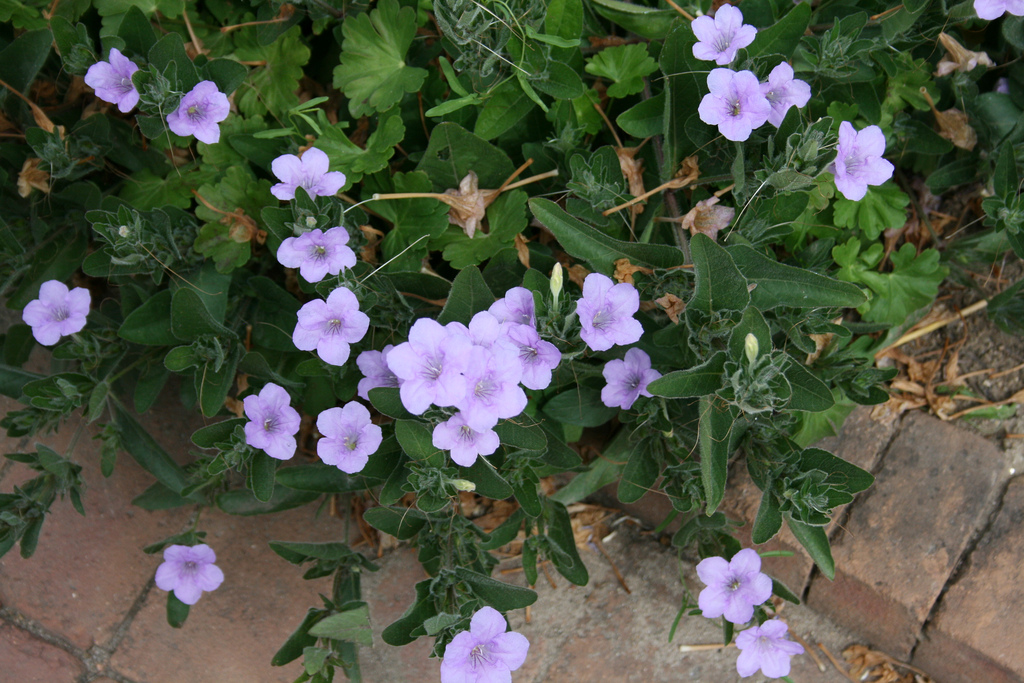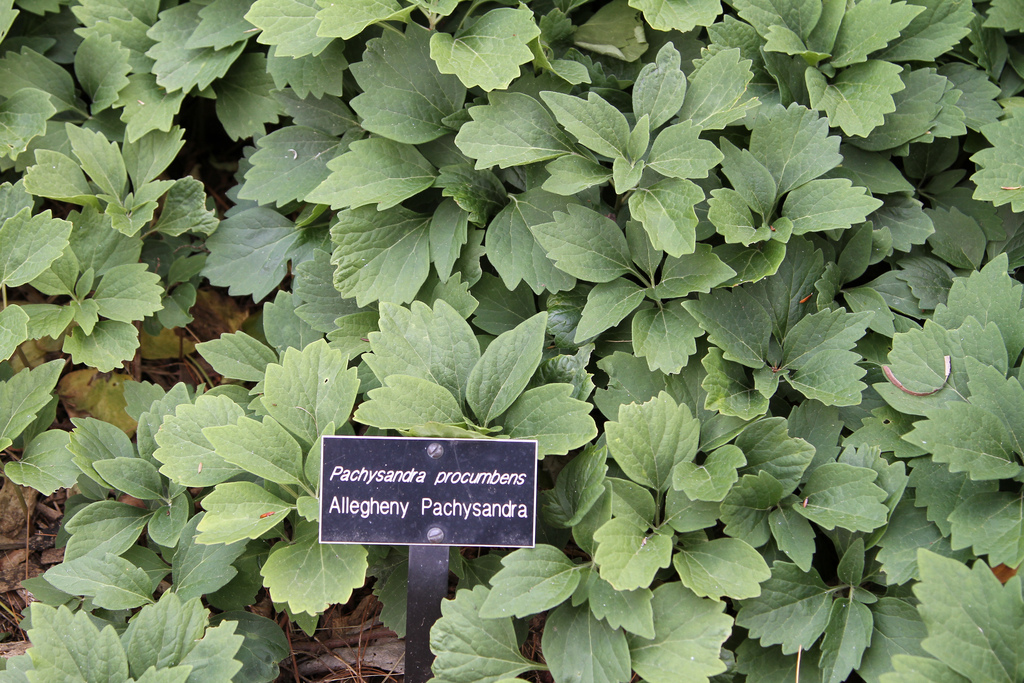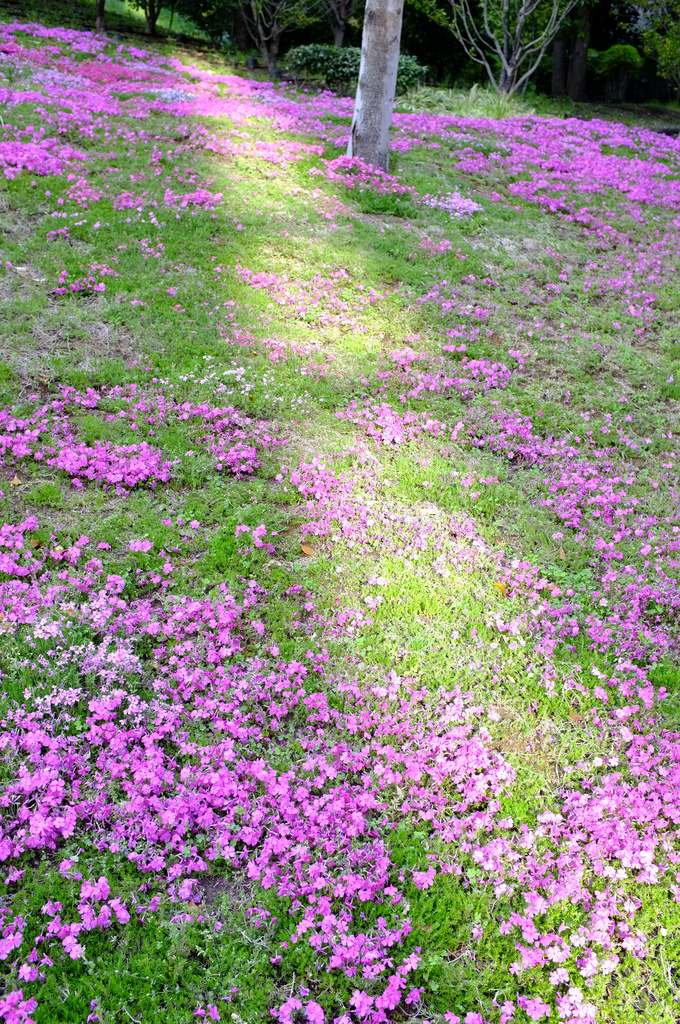Like it or not non native groundcovers are a staple in traditional landscaping. They are the area rug of the landscape designer. That thing you throw on the ground that ties everything together. Why when native groundcovers can do the job just as well?


Instead of arguing that you don’t need them (you don’t), let’s look at some native groundcovers as alternatives to the commonly used Vinca, Pachysandra, Junipers, and English Ivy that seem to dominate so many of our landscapes.
I do understand that these plants serve some purposes. They do fill the space in beds where we want something uniform to grow and to keep weeds at bay.
An important aesthetic purpose ground covers serve is that they provide important visual relief from the more busy parts of the garden.
Although I am beginning to see less need for this type of monoculture planting when there are so many more interesting ways to cover the ground (See my post on Simple Plant Combos).
Most of the ground covers we typically use are aggressive at spreading and covering the ground. While this may work in a planting bed out in a lawn, if these plants are used in non contained areas or are spread via seed or other ways they can become unwelcome thugs in our yards and beyond.


Not only can these plants be a pain in our yard, two of them are major invasive species. English ivy (Hedera helix) rapidly invades forests smothering and displace native understory flora. Vinca minor is also a common and harmful invader of U.S. forests.
Alternatives
Let’s replace these invasive exotic plants with one or more of our native groundcovers. These natives possess many of the traits that gardeners look for in a groundcover. These because they are native, they help to contribute to our ecology by supporting the food web.
Native Groundcovers for Full Sun
Prairie dropseed (Sporobolus heterolepis): Bring the graceful texture of grasses to your garden in a plant size that won’t overwhelm it. Prairie dropseed gets only about 3 feet tall and wide and most of the year it is smaller. The slender, fresh green leaves of spring turn gold in fall, with a popcorn like fragrance. Birds eat the seeds too and it does not spread around like so many other grasses.


Prairie Smoke (Geum triflorum) – What a cool little prairie plant. Subtle Pink flowers emerge in April or May but the real show begins when the seed heads open. They kind of remind of a bad hair day. The basal foliage is also interesting throughout the year.




Wild Petunia (Ruellia humilis) – Actually this plant not a petunia but it sure looks like one. Growing about a foot high and blooming throughout the hottest, driest times of the summer, Wild Petunia is sure to please while other plants are drying up. This is a fairly aggressive seeder that will spread around a bit. It works well as a native groundcover that fills holes that open in plantings.


Wild strawberry (Fragaria virginiana): This creeping plant makes a nice native groundcover in full to part sun, such as under shrubs out in the open. It has clusters of three leaves and white flowers in spring. It also has tiny edible strawberries, if you can beat the other critters in your yard to them. Wild Strawberry plant can also have great red fall color.


Native Groundcovers for Part shade to shade
Wild geranium (Geranium maculatum): A woodland native, wild geranium has delicate pink to lilac flowers for several weeks in spring. Plant it in part shade in soil rich in organic matter. Cut it back after blooming for a neater mound of foliage.

Jacob’s ladder (Polemonium reptans): The blue, bell-shape flowers bloom on 12-inch-tall stalks in late spring. The leaves look like they are marching up their stem like rungs of a ladder. Plant it in part shade with moist soil rich in organic matter. It stays in a nice mound.


Canadian wild ginger (Asarum canadensis): This woodland native makes one of the neatest native groundcovers, spreading nicely in shade. The heart-shape leaves cover the inconspicuous dark maroon spring flowers. Wild ginger prefers slightly acidic soil, but will spread in somewhat more alkaline soil if it’s amended with organic matter.


Pennsylvania sedge (Carex pensylvanica): A grassy texture is hard to find in the shade garden, since most grasses need full sun. Enter sedges, many of which prefer shade and wet soil. Pennsylvania sedge has silky foliage that makes it a lovely underplanting. Try it for contrast with large-leaved plants such as hostas.

Foamflower (Tiarella cordifolia) -Foamflowers are common in the woods of eastern North America, but not many gardens. They are easy to grow when given moist soil high in organic matter and shade.


Allegheny pachysandra (Pachysandra procumbens)- You probably know the more commonly overgrown Pachyandra (Pachysandra terminalis). I think they planted some unbelievable number, like 50,000 of these at that Japanese garden I spent about a decade at.
Like that plant I never want to see again, this native produces nice rounded, toothed foliage on low stems. Allegheny pachysandra has an elegance, it’s Asian cousin does not. It changes as the seasons change. In early spring, small, fragrant white flowers appear and last for a week or two. Soon new upright shoots the color of lime green emerge.
These grow about a foot tall with medium-green leaves that darken over the course of the summer. It my area they usually die to the ground in winter, but in zones 7 and warmer it is evergreen. It is slower growing, but worth the wait for it to fill in. Classy looking plant.


All but one of its more than 60 species of Phlox are native to this North America. Many have been grown as flowering perennials, but there are several eastern species that also work as groundcovers very well. Phlox stolonifera, creeping phlox, is just such one that works great in shade. Plugs of this phlox spaced 6 inches apart will provide effective, lasting cover within a year or two.


Another plant often called Creeping Phlox (Phlox subulata) is more commonly seen in my area. This one takes Full sun and hot conditions and works just as well as an semi-evergreen groundcover that seems to usually flower at the same time as Common Lilacs in my area at least.


I could go on and on (just writing about phlox!), but I will spare you. Hopefully, you have a few ideas of some new plants you can try that won’t take over your yard and the rest of your neighborhood.
And if they do escape, who knows maybe they were there before we were and are just taking back their rightful place.
Susan says
I really enjoyed your information. I live in Hot Springs Village,AR. I have shade in front and shade- sun in backyard. Any of the ground covers you wrote about work in my yards?
Sue B. says
I am REALLY liking your site!
Jim says
Thanks, I am glad you like it.